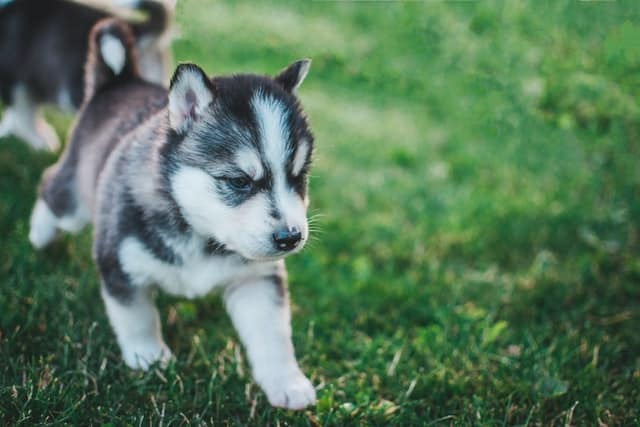Training base for a puppy should preferably be given during the first year of life . The sooner you start, the better: for him and for you … Don’t wait for him to acquire bad habits which, later on, will be practically impossible to correct.

Dogs don’t learn like humans. They need their pack leader (you masters) to know how to behave inside and outside the home . A responsible teacher is aware of this very important detail. You will need to dedicate time and patience to the education of your puppy, in order to raise a balanced and obedient dog .
In the first months of life, the puppy moves like a baby. It touches, explores, plays, and in doing so often puts its paws or snouts where it shouldn’t. Correct it with love, follow it and never leave it alone. He will learn by playing and thanks to positive reinforcement, understanding the commands you have taken the time to teach him.
The puppy and basic training
If the puppy is less than three months old, it would be better if only one member of the family took care of its upbringing . As he grows, he will then be able to receive instructions from other people as well.
The first thing to do is to choose a suitable place for him to sleep and rest. Assigning and teaching to occupy the kennel, as one’s own space, is the basis of puppy training. A comfortable, clean place where your young dog feels safe and secure.
It is very important to give it a name: the puppy cannot understand you, but it will learn to recognize the sound of its name and, from now on, it will come back to you as soon as you call it. Better to find a short name, easy to memorize, immediate. In the beginning, you will have to say it slowly, encouraging him to approach each time he is called.
The puppy will then have to learn the meaning of the word “No” . Always pronounced in a clean, clear and confident tone, but without shouting or intimidating. He will associate the sound “No” with a prohibition, something that is forbidden to him. This is a big step forward in basic puppy training.
Teach the puppy how to do the toilet
Training a puppy to do his thing, according to family standards, is one of the worries of many owners. It is not as difficult as it seems: just a little training and a mop at hand …
One of the most appropriate methods is to take the puppy every two hours to where he needs to evacuate. If he lets go, reward him by using the positive reinforcement lever . Cuddles, treats , toys , do not skimp in generosity and make him understand that you are rewarding him for doing something good.
Puppies usually evacuate an hour after a meal. Now is the time to get them out. If they urinate or defecate in a place where they shouldn’t, make up for using the aforementioned “No”. To avoid unpleasant surprises at night, it is advisable to remove the water bowl an hour before the dog goes to sleep.
In short, a few simple tricks to complete this basic training without problems. If you have followed all the steps correctly and consistently, in 6-7 days you can complete this first phase of education.
Other tips for training a puppy
There are many factors that you will need to consider in basic puppy training. These are the most important ones:
- Food should always be given at the same time . In addition, the dog will have to eat after you , so that he understands “who is the boss”.
- Never leave it alone for too long but gradually get used to it: first for short periods, then for longer periods.
- Have him walk inside the house with the leash fastened. Get him used to going at your own pace and sitting down when you stop. Always reward him when he obeys.
- Encourage socialization with other dogs, people, and other types of animals.
- Never hit him with the leash or yank him by the collar. It is a sort of “umbilical cord” with the owner and would only produce distrust in you.
- If the puppy pulls off the leash, just say “No” and change direction so the puppy knows who the pack leader is.
- Do not treat, vaccinate or punish the puppy in the area where it sleeps.
We advise you to always give orders clearly and simply. This way, the puppy will understand them more easily. Always use the same tone of voice, avoiding yelling or making sudden gestures when scolding him.
Important: always try to assign consistent commands. A “No” must always remain “No” , never give in to an attitude of submission, because it is the only winning way to establish fixed and solid rules that will greatly simplify coexistence with your new four-legged friend.






